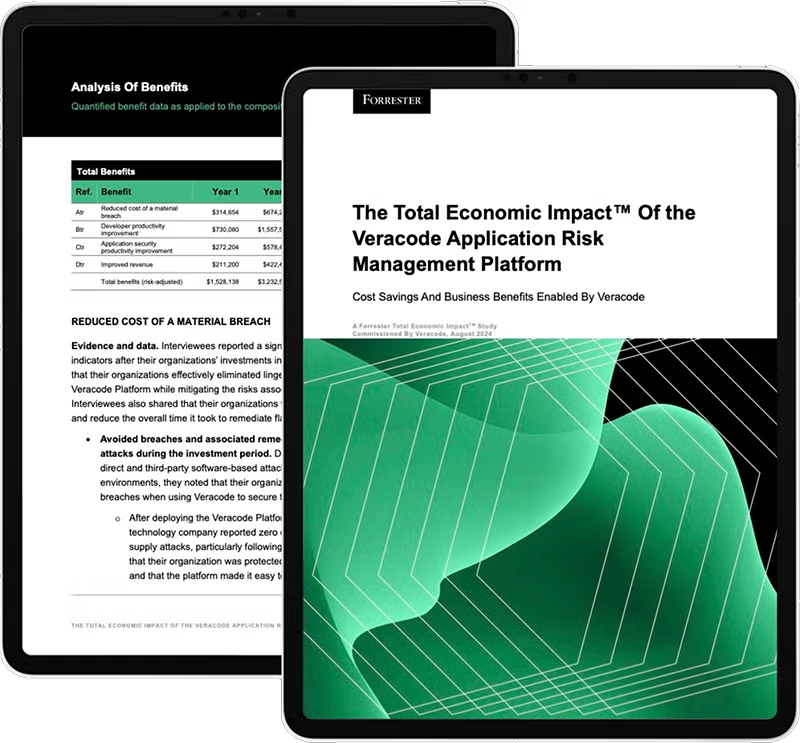Organizations face an increasing number of software security threats that can compromise their sensitive data and disrupt business operations. To effectively manage these risks and enhance their security posture, it’s crucial for organizations to adopt modern application risk reduction strategies that not only mitigate potential vulnerabilities but also provide clear, actionable next steps and insights for reporting purposes.
In the journey to mitigate software risks by 75%, the 2024 Forrester Consulting TEI study, commissioned by Veracode, outlines a robust 3-year strategic plan, based on extensive interviews with four Veracode customers. This plan is not just a blueprint for the composite organization but a transformative pathway towards enhancing software security and developer engagement. Here’s how it unfolded.
Phased Onboarding of Developers
The strategy began with a structured onboarding process for developers onto the application risk management platform. The first year targeted onboarding 40% of developers, focusing on daily Static Application Security Testing (SAST) and Software Composition Analysis (SCA) for 60% of critical, customer-facing applications and 50% of internal critical applications.
The second year, the composite organization ramped up to 80% of developers, extending these security scans to all critical applications and introduced monthly Dynamic Application Security Testing (DAST). By the third year, the goal was to have 100% of developers onboarded, with all applications undergoing daily SCA and SAST, along with monthly DAST.
Some benefits to defining a ramp period were:
- combined information, people, process, and technology to achieve significant results.
- a focus on riskiest apps or to accompany specific teams
- they developed and grew a security champions program
Enhancements in Security Protocols
Central to the plan is the utilization of the platform’s automated workflows and policy enforcement to bolster security protocols. These aim to minimize security debt and enhance the rate of applications meeting security standards. Security measures are integrated throughout the design, build, and deployment phases of the software development lifecycle, ensuring a comprehensive embedding of security practices.
It’s worth noting that different types of testing and different policies can come into play at different phases of the SDLC, so it’s helpful if a vendor has consulting services to aid you in getting this right from the start. When the right scans are happening at the right times, and AI is utilized for fixing vulnerabilities before apps even go into production, you’re maximizing the impact these practices can have on developer productivity, revenue generation, and more.
Overall Benefits of a Dedicated Application Risk Reduction Strategy
We believe the strategic implementation of this plan significantly curtails the probability of data breaches stemming from software vulnerabilities, thereby leading to considerable cost savings and an elevated security posture. It also boosted developer productivity by 80% shifting their focus from security concerns to innovation. Furthermore, by facilitating 85% AppSec efficiency gained from automation, this strategy aligned with strategic growth objectives, potentially enhanced the composite organization revenue streamed by 20%.
Putting the Plan in Action
We believe this 3-year plan is a testament to the commitment to deeply integrate security within the software development lifecycle, aiming for a substantial reduction in software-based risks, breach insurance costs, and technical debt, and fostering a secure, productive, and innovative development environment.
To truly understand the transformative impact that an application risk management platform capable of executing this strategy can have on your organization’s application security and development processes, we invite you to experience it firsthand. Schedule a demo today to see how Veracode can enhance your security posture, streamline your workflows, and drive innovation.
Download the case study now to learn more about the kind of impact this strategy has on security posture, revenue growth, and more.

